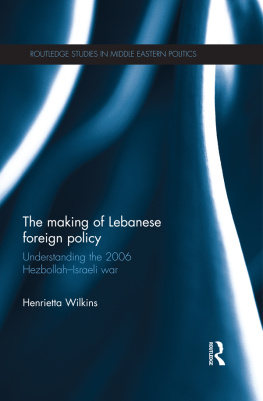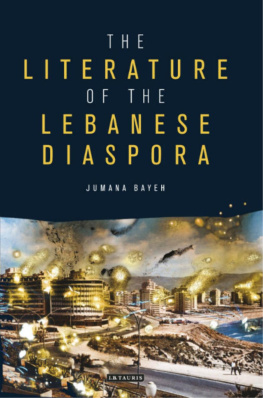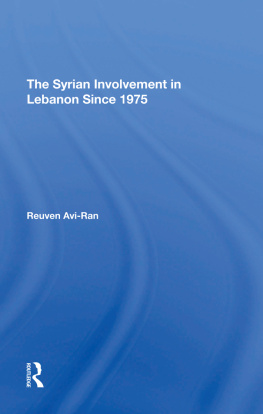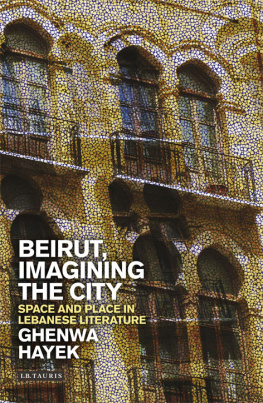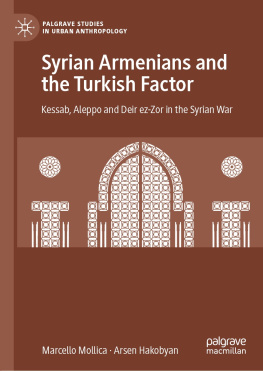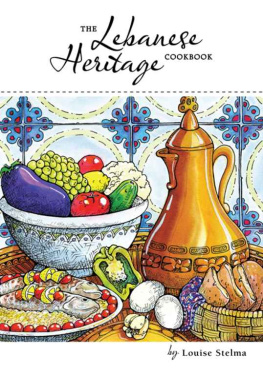Published by arrangement with Fundao Editora da UNESP (So Paulo State University Print House Foundation)
Originally published by Editora Hucitec, So Paulo, as Patrcios: Srios e Libaneses em So Paulo
Oswaldo M. S. Truzzi 1995
Translation 2018 by the Board of Trustees of the University of Illinois
All rights reserved
Library of Congress Cataloging-in-Publication Data
Names: Truzzi, Oswaldo, author. | Stern, Ramon, translator.
Title: Syrian and Lebanese patrcios in So Paulo : from the Levant to Brazil / Oswaldo Truzzi ; translated by Ramon Stern.
Description: [Urbana, IL] : University of Illinois Press, [2018] | Series: Studies of world migrations | Originally published by Editora Hucitec, So Paulo, as Patrcios : Srios e Libaneses em So Paulo | Includes bibliographical references and index.
Identifiers: LCCN 2018012652 | ISBN 9780252041952 (hardcover : alk. paper) | ISBN 9780252083631 (pbk. : alk. paper)
Subjects: LCSH : SyriansBrazilSo Paulo (State)History. | LebaneseBrazilSo Paulo (State)History. | ImmigrantsBrazilSo Paulo (State)History. | So Paulo (Brazil : State)Ethnic relations. | So Paulo (Brazil : State)Emigration and immigrationHistory.
Classification: LCC F 2659.S97 T 79 2018 | DDC 305.800981/61dc23
LC record available at https://lccn.loc.gov/2018012652
ISBN 9780252050664 (e-book)
Cover photo courtesy of Farayde Matta Fakhouri
For Roseli
Preface to the Brazilian Edition
BORIS FAUSTO
U ntil recent years, the studies of mass migration to Brazil beginning in the last decades of the nineteenth century have focused on rural areas. There was good reason for this. In the state of So Paulo, where most immigrants settled, this influx coincided with the move from slave to free labor and especially with the policy of rural settlement. Understanding the formation of contemporary Brazil required understanding this foundational change in labor relations and how conflict with abolition was minimized. Nevertheless, this focus has left studies on urban immigrants largely in the shadows, an oversight that is particularly glaring in light of the fact that the subsidized settlement of rural immigrants and the presence of foreign contingents in urban centers are interconnected phenomena for several reasons.
First, since the beginning of mass migration, a continuous rural-to-urban flow has occurred, though the number of migrants may never be firmly established. Second, and more important, the immigrant population that settled in the cities drove growth in business, services, and industry in both urban and rural areas. In addition to urban development, agricultural production expanded for external as well as internal markets, with a base in rural settlement and gradually in small-scale property. The two processes were wedded to each other and allowed for the accumulation of capital and the widening of the market, factors that drove the capitalist expansion of So Paulo.
Italians are perhaps the best known group of immigrants who spread all over So Paulo, both settling in the cities and integrating into the current of subsidized rural immigration, but Syrians, Lebanese, and Jews remained concentrated in urban areas. These groups have had an importance that is out of proportion to their relatively small numbers, but little has been written about them. Regarding Syrians and Lebanese, one prominent exception is Clark Knowlton, a US sociologist influenced by Florestan Fernandes, who wrote a 1955 dissertation, Spatial and Social Mobility of the Syrians and Lebanese in the City of So Paulo, Brazil, that was translated into Portuguese and published in 1961 as Srios e Libaneses em So Paulo: Mobilidade Social e Espacial.
Oswaldo Truzzis book returns to the subject, making valuable contributions from many angles. He analyzes So Paulos Syrian-Lebanese population through a lens that integrates the transoceanic dislocation of the ethnic groupor its several subgroupswith the specificity of their incorporation into the citys social environment. This comparative assessment of Syrian and Lebanese immigrants in the United States and Brazil is noteworthy and particularly fruitful because this approach is not common in Brazilian studies, even as it has become increasingly popular in immigration studies outside of Brazil.
Truzzis sociocultural analysis explores the slight differences in the trajectories of Syrians and Lebanese in the two countries, emphasizing the levels of economic development in Brazil and in the United States at the time of the inflow of immigrants, the competition between different immigrant groups in the United States, and the weight of Anglo-Saxon culture as modeled in the United States. Doing so allows the author to answer the basic question of why So Paulos Syrians and Lebanese had much more economic success than their US counterparts even though both groups started out as humble peddlers.
At the same time, Truzzi specifically analyzes the Syrian-Lebanese communitys inclusion in So Paulo, mapping out the framework of a process that resulted in the reinvention of identities based on the internal experience of the ethnic group as well as its contact with So Paulos elite and with other immigrant ethnics. This analysis allows for a better assessment of certain low-level commercial activities. Peddling emerges as a trampoline that was quite effective for launching various ethnic groups up the social ladderfirst Italians, then Syrians and Lebanese at the turn of the twentieth century, and finally Russian and Polish Jews beginning in the 1920s.
Truzzi also shows how the expression Syrian-Lebanese is an error, as particularly after World War I, the differences between the two groups were re-created in Brazil. Those disparities have not previously been explored on a group rather than individual level. In addition, Truzzi not only elucidates the social, commercial, and industrial distinctions between Syrians and Lebanese but also goes further, bringing a new dimension, the formation of a professional class of descendants of Syrians and Lebanese, and basing his conclusions on enrollment data from postsecondary schools. Truzzi finds that despite the vagaries of personal and family circumstances and the social and psychological effects of anti-Turk prejudice, Syrians and Lebanese succeeded at being upwardly mobile and were integrated into the various levels of So Paulo society.
Finallyand perhaps most revealinglyTruzzi demonstrates that the children and grandchildren of Syrian and Lebanese immigrants are disproportionally represented in So Paulos political arena, long under control of the citys old guard (whose members were less tied to the city than might be expected). The authors explanations for this phenomenon are intriguing and warrant further study.
For all of these reasons, along with his approachable writing style, this volume constitutes an important contribution to the contemporary history of So Paulo and for more general histories of immigration.



